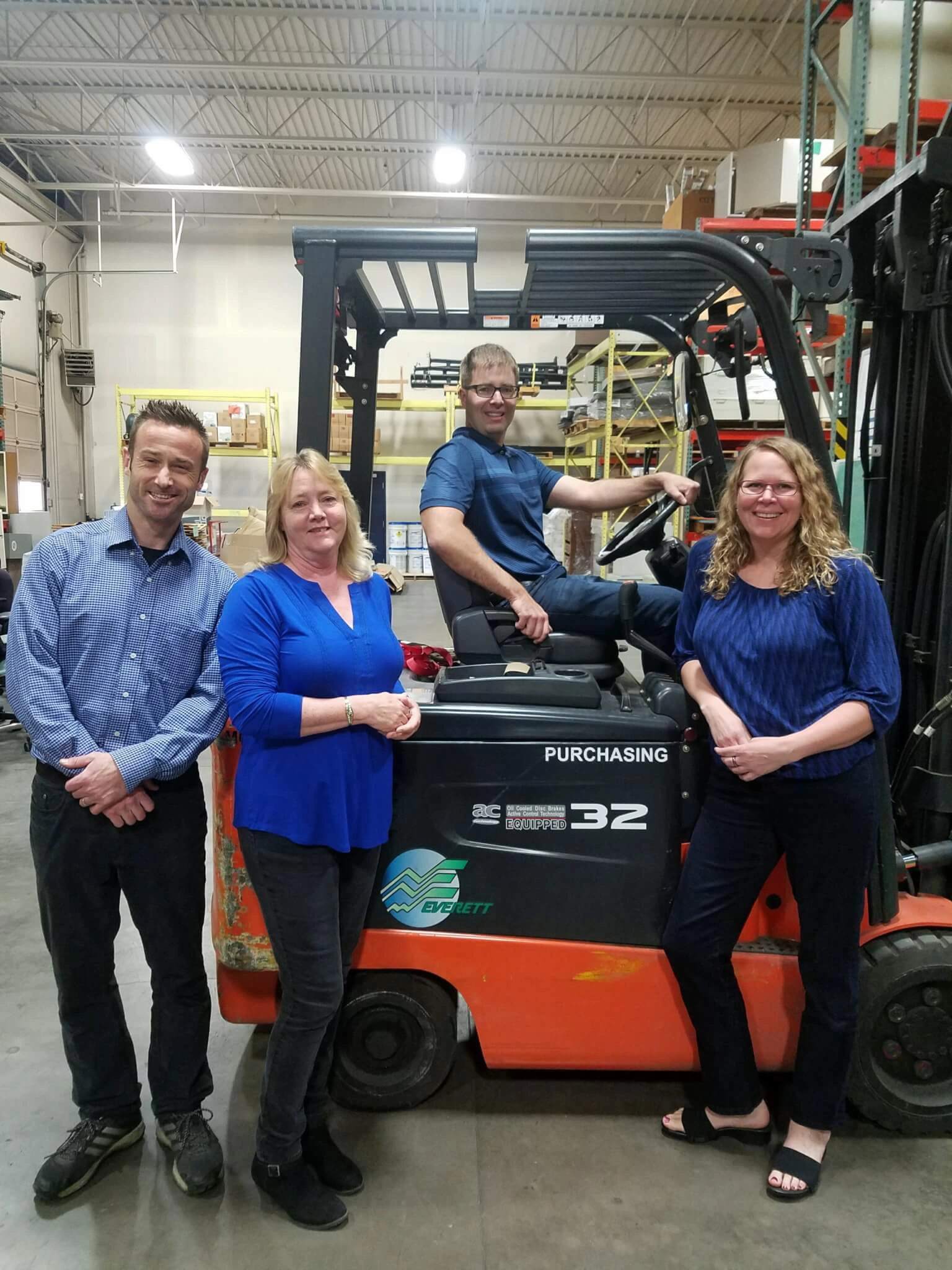
Public Purchasing Insights from Theresa Bauccio-Teschlog
December 30, 2024
As Purchasing Manager for the City of Everett, Washington, Theresa Bauccio-Teschlog matches the needs of her internal customers with the offering of the local business community—including construction services. In this interview, she discusses Washington’s construction landscape, ways technology has changed local government and Everett’s Job Order Contracting (JOC) program.
“Contractors will decide to bid on your project based on how easy you are to work with”
Theresa Bauccio-Teschlog
What is Everett, Washington like?
Everett is a sprawling city of about 42 miles with 10 miles of freshwater shoreline and 11 miles of saltwater shoreline. We have a population close to 110,000 and we’re 30 miles north of Seattle and 85 miles south of the Canadian border. From Everett you can get to the water, you can get to the city, you can get to the mountains—it’s in a great location.
The city provides a full range of municipal services, including a library, parks and community services, general administrative services, police, fire and emergency medical services, maintenance,
planning and zoning. We have five enterprises—water and sewer utility, solid waste for recycling, two golf courses and a transit system.
You’ve worked in government for 17 years. How have you seen government work change in that time?
Technology has been a huge advancement and will continue to change the face of government for businesses and citizens. Going back 17 years when I first started with the City of Lynnwood, we sold printed bid-plan sets. For smaller projects, I remember faxing bid notifications because at that point contractors didn’t have email. As technology evolved, we went to online plan centers where contractors could find plans online and print what they need.
At Everett, we’ve created a Digital Records Center and have put a lot of our documents online to allow our citizens better access to records and more transparency. We are continuing to look at what kind of information our citizens want and how can we can improve access to it through an Open Data project.
What challenges does your department face? How do you overcome them?
Limited resources—that’s our biggest challenge. Across the board, we are asked to provide additional services with the same amount of resources. Prices and labor costs are going up, and we have the same amount of revenue. But it’s more than that.
Social problems like homelessness and the opioid crisis trickle down into government and impact where resources go. For example, we have a city animal shelter. If a person is unable to stay in their home and can’t keep their pets, we can see an uptick of animals at the shelter. We need resources to handle that increase effectively.
 What do you wish people understood about local government?
What do you wish people understood about local government?
I wish people knew how much it costs to run an entity. When we go to replace the hot water tank in one of our buildings, it isn’t the same as replacing the hot water tank in your house because we have regulations to follow and prevailing wage rates to consider and tracking and reporting. Processes have been put in place to protect the public, but that protection can sometimes delay the speed of services.
Folks who work in government want to make a difference in our community and help people. For me personally, I love stretching taxpayer dollars and spending them wisely. I’m trying to get the best value for the organization so taxpayers get what they need at the best price possible.
What are some challenges impacting Washington’s construction industry?
The state is facing a severe lack of subcontractors. If you look around you’ll see a lot of cranes; that’s a sign of large construction projections. All the subcontractors are tied up on those jobs. Trying to entice busy subcontractors into a government job with more regulations and paperwork is incredibly difficult.
To compensate for the shortage, we’re planning better and getting more creative with how to bid projects. We’re looking into how to bundle projects to make them more attractive. We’re also being intentional about when we send projects out for bid. Timing matters. Contractors are busy building during the spring and summer, so we have to get out to bid in the winter. It’s all about creativity.
What tips do you have for building relationships with contractors?
Contractors will decide to bid on your project based on how easy you are to work with, so you have to build a strong reputation within the local business community. Contractors evaluate agencies just like agencies evaluate contractors. They want to create a partnership, and they are constantly judging the fit. I suggest you go out of your way to build trust.
When we have pre-bid meetings, the Procurement group facilitates them with the project managers, so contractors can see we’re a good team. We make it a point to be responsive and keep them in the loop, so everyone feels supported. That goes a long way to developing a positive relationship.
One of the ways the city of Everett has been creative is by implementing a Job Order Contracting (JOC) program. Why did the city turn to JOC as a procurement method?
We’ve had a JOC program for three years now, and we originally implemented it to improve staff efficiency. Now our city uses it for everything – minor seismic upgrades, roof repairs and ongoing street improvements. Over the life of the program, we’ve used it for roughly $11.5M in projects. State legislation caps JOC projects at $350,000 and requires us to subcontract 90 percent of each job order contract, so we’re using JOC for smaller projects requiring multiple trades. It saves a lot of time when writing specifications because you’re working one-on-one with the contractor to find better means and methods to get work done. It really streamlines the process.
What are some projects the city has completed using its JOC program?
One of my favorites is the Howarth Park bridge renovation. There was so much complexity because the work was performed over an active railroad line. Multiple trades were involved, and they had to reconstruct the pedestrian bridge in place. One of our project managers recently told me we would have not been able to clearly spec the project out or describe what we needed with our in-house expertise. A typical design-bid-build project would have taken us probably a year of design before the bidding process and then eventually building. This project was under a lot of public scrutiny and JOC saved a significant amount of time.
What advice do you have for public agencies considering implementing a Job Order Contracting program?
If you’re going to implement a new program, ask other agencies how they’re running their programs and borrow ideas. Find out what’s working, what’s not working, how they would improve their processes and figure out what is going to work for your entity. Never start from scratch.
About Theresa Bauccio-Teschlog, CPPB
Theresa is the Purchasing Manager for the City of Everett, Washington. She has over 20 years of supply chain management experience of which over 17 years have been spent in public procurement.
Theresa is a graduate of Seattle University where she earned her Bachelor of Arts in Business Administration with a dual concentration in Operations Management and Marketing. She also holds the designation of Certified Professional Public Buyer, as well as a Certificate in Construction Contracting from Portland State University. Theresa serves on the NIGP faculty for Contract Administration in the Public Sector, Contracting for Construction Services, Developing and Managing Request for Proposals and Practical Specification Writing. In addition, she frequently teaches Adding Value to Procurement, World Class Procurement Practices, Effective Construction Contract Management and Managing your End Users and Suppliers: It’s all about Relationships! In her spare time, she has participated on three NIGP Global Best Practice teams including Specifications, Protests and Selecting the Appropriate Construction Project Delivery Method as well as serving as the Washington State Chapter of NIGP Education & Research Chair.

Share this:


 What do you wish people understood about local government?
What do you wish people understood about local government?


